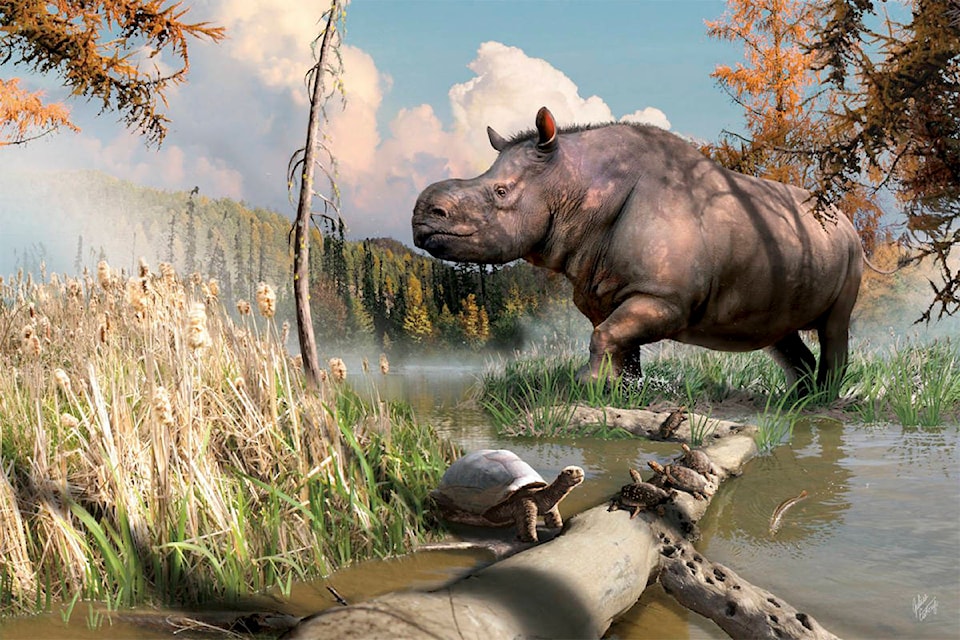There is a tear in the timeline of what is now known as the Yukon.
Sixty-five million years ago dinosaurs went extinct; the ice age started 2.5 million years ago.
That semi-colon represents a gap, a “massive” void — until now, and thanks, in large part, to a group of day-trippers.
Fossils of ancient animals found in 1973 near Whitehorse were recently put under a microscope by a team of researchers, two of whom are from the Yukon. A box of old bones tucked away for years has given way to the revelation that rhinoceroses once romped around the territory.
“So, this is really one of those first examples that we have of a large mammal living in the Yukon before the ice age,” said Grant Zazula, a Yukon paleontologist who was part of the study lead by University of Colorado researcher Jaelyn Eberle.
North American mammal fossils are found in Europe, Zazula said, indicating they were crossing over the Bering land bridge, and rhino fossils have been discovered in parts of Nunavut and British Columbia. Until this discovery, though, the Yukon had always been the outlier.
The fossils are roughly 8 million years old.
Fragments of an ancient tortoise and turtle were also found. That they were shows that the Yukon was once a place where reptiles could survive, Zazula said.
But that’s not all. As Zazula put it: “The past is the key to the future.”
“Looking at projected climate change scenarios where we have increasing levels of carbon dioxide in the atmosphere and global warming, as a result of that we’re seeing animals moving northward today,” he said. “Maybe we’ll see reptiles moving into the Yukon again in 200 or 300 years.
“That’s why I think studying the fossil record of past warm intervals is really interesting because it provides a bit of a benchmark of what we might see in the future.”
Pieces belonging to an ancient pike were also scooped up. Zazula said that they have been continuous residents of the territory shows how resilient they are.
“Citizen science” is inseparable from all of these discoveries.
“People in the Yukon are out there hiking all the time and picking away at things,” Zazula said. “A lot of Yukoners are pretty curious about the outdoors and the land. If they find neat things like that, it’s a good thing to tell scientists.”
It was the spring of 1973 when Joan Hodgins, then a Yukon resident, took a group of youth for an outing to the defunct Whitehorse copper mine near Wolf Creek.
Earth had been toppled high in an effort to get to ore beneath and left there, she said.
“I was picking up some nice lookin’ bone, other stuff I had no clue what it was.”
There wasn’t a paleontology lab in the Yukon at this point. For decades Hodgins shelved her findings — teeth of the ancient rhino, among other things — their significance untold to the world.
“I just kept them with me all those years and then in 1996 I was working with this paleontologist (now-retired Dr. John Storer) who was coming up to the Yukon to work at the Beringia Centre and he looked through the stuff that I had found and we picked out a few pieces to include in the collection here in Whitehorse.”
Then the fossils were handed over to Zazula in 2014, she said.
“Because of his commitment and his curiosity regarding the fossils this is what happened with them,” Hodgins said. “I’m just thankful that I had kept them and turned them in and this is what it has led to, unknown to anybody that this even existed.”
Contact Julien Gignac at julien.gignac@yukon-news.com
